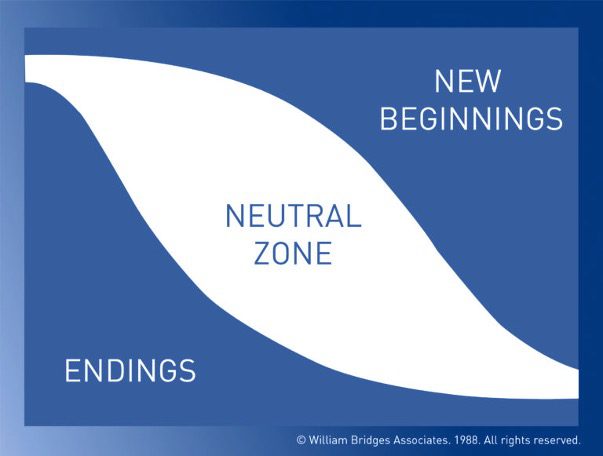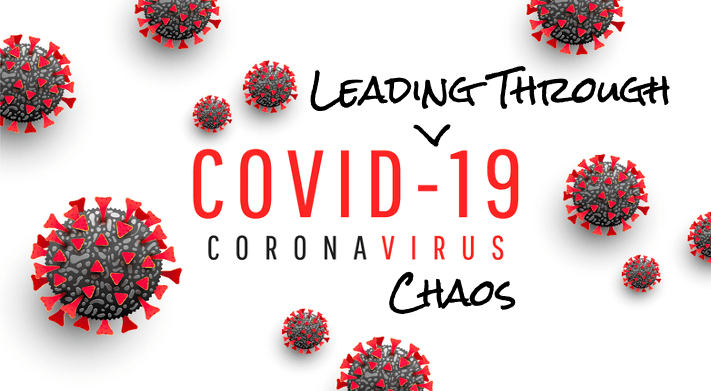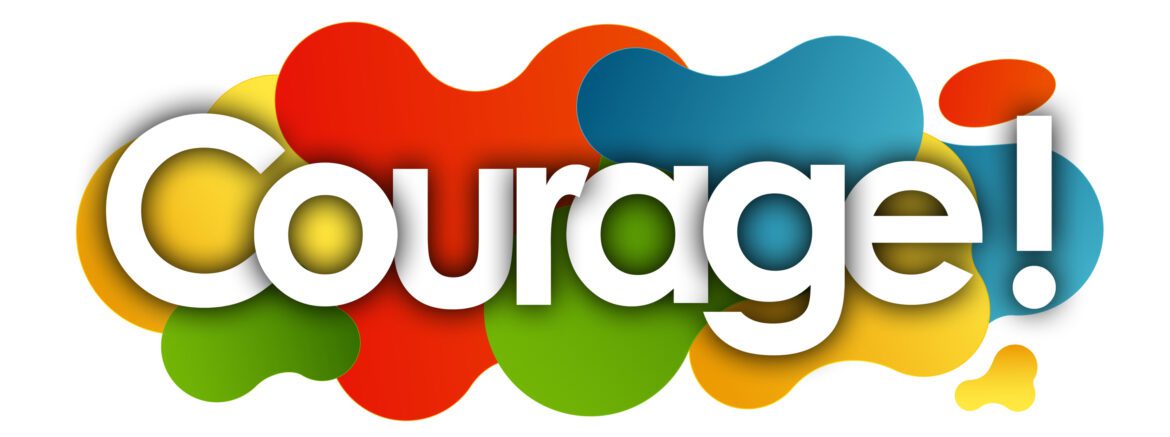Leadership in a Post-Covid Era
When Covid hit, we were writing and talking about the “new normal” and that we were in, as William Bridges calls, the “neutral zone” leading to new beginnings. I referenced Bridges framework to help our clients understand what was going on in both their personal and professional lives. As the mask mandates continue to go away and we head back to work, it’s helpful for us as leaders to ponder the question of whether leadership has changed or perhaps not?
We have been asking ourselves the same question. Has anything changed permanently? Are we back to the old normal or is there really a new normal? To answer this question, we did a “lit search” to identify what is trending in the workplace – what people are talking about? What will be the competencies, skills, practices that we need to embrace and develop to drive our success? Her research may surprise you. Top of the list? Empathic leadership.
#1: Empathic Leadership
Empathy and support of others continues to be on the top, particularly when the context in which people are working includes high levels of complexity, uncertainty, and change. I don’t know about you, but I think we can all agree that things have gotten more complex, uncertain, and unpredictable. One of the skills noted was the practice of curiosity – which is foundational to creating cultures of empathy.
Other findings showed that empathy is not only about emotional empathy (understanding the struggles, challenges of managing a home front on top of work), but empathy is also about cognitive empathy which is really about engaging others to help us see things differently. To help us view problems through a different lens, evaluate threats that we may not see, etc. Another practice to develop greater levels of empathic leadership included learning how to give direct, clear and constructive feedback while having a greater level of awareness in how the feedback is being received; and then making it safe for team members to have healthy debate in service to the best possible solution.
#2: Empowering Teams through Purpose and Clarity
Ranked as #2 is leading in a way that empowers teams by having a clear purpose (why we’re doing what we’re doing) and being clear on expectations. The ability to communicate clear expectations and link those expectations to why they are important is key. Another practice that showed up is the team leader’s ability to communicate the value proposition underlying the work that is being done to ultimately inspire, energize, and create a sense of pride. This last practice was a big driver of engagement and increased performance.
#3: Developing Resilient Organizations
Coming in at #3 was resilience. Given all that we’ve been through, this is not a big surprise. What surfaced was the importance of leaders managing their own stress and adapting to challenging, “overloaded” environments. For this to happen, leaders need to increase their levels of self-awareness, so they are more aware of when they kick into overdrive and/or demonstrate reactive tendencies. Another aspect of developing resilience was connected to the leader’s ability to balance optimism and realism while acknowledging challenges and focusing on where the business is going.
And so, as we continue our journey into this new normal, we all need to step back and evaluate what we need to do differently. Perhaps our pre-pandemic leadership playbooks may need to have a few pages added.
Weathering the Pandemic: Leadership Practices to Better Connect with Your Teams
It’s been nine long months in which we no longer shake hands, meet in person, or see each other except on Zoom. The stress and loss affect us emotionally, mentally, and physically. And that’s whether or not we ever test positive for the virus, which continues to be a threat. No wonder many of us are suffering from pandemic fatigue.
As this global storm tests our endurance like never before, it’s relevant to remember the saying, “Leaders bring the weather.” As leaders, we set the mood within our teams and organizations, especially in difficult times. The bad news? This battering crisis continues for now. The good news? We’ve survived long enough to know what three practices can make leaders like you resilient, effective, and positive as we weather the pandemic storm. They are:
Empathy:
Empathy is the emotional glue that connects us, when we can listen, feel for one another, and sincerely understand what others are experiencing. It means being present, engaging at a deeper heart level with genuine concern. People are yearning for emotional connection these days.
We recommend you start every meeting with the simple practice of asking the question, “How are you doing? Really doing?” If someone appears to be struggling, follow-up with a one-on-one check-in. Also, revisit your open-door policy. Prop that door wide open, figuratively of course, and be welcoming and safe at a time when our world isn’t. Relationships can be strengthened with even a few minutes of sincere conversation. A true win, win.
Vulnerability:
Vulnerability is often considered a weakness, when in fact it requires courage. In her book, “Dare to Lead,” Brené Brown describes vulnerability as “uncertainty, risk, and emotional exposure.” It’s a conscious, unsettling release of control. Effective leaders find the courage to admit when they don’t have a solution or make a mistake. They practice and get more comfortable not having the answers and, as a result, seek input from others.
We suggest you start by consciously asking more questions and encouraging team engagement. Teams that have a greater sense of vulnerability have higher trust levels, with less second-guessing. As a leader who values vulnerability, you can create an environment of accountability and compassion.
Authenticity:
Authenticity means you show up in ways that reflect who you truly are and how you feel. Rather than showing the Facebook version of yourself, or armoring up and presenting, you show up and share your whole self. Authenticity can come in the form of addressing tough issues courageously, speaking the truth, and applying your core values to make decisions.
Challenge yourself. Focus on being brave, even uncomfortably authentic. How? By being direct, candid, and honest, while still showing respect and love for your team. You’ll find it surprisingly freeing. Eventually, a sense of balance and openness becomes the norm, your team existing ‘above the line’ in that ideal space that defines a low drama, high performing, healthy work environment.
Construction zone ahead: our findings reveal that effective leaders continually invest in their personal growth. If the practices of empathy, vulnerability, and authenticity could be ordered on Amazon, they’d be in as much demand as hand sanitizer and Clorox wipes. Instead, each one takes practice and long-term commitment on your part. But the proven results, of improved job satisfaction and higher performance overall, make this work important and rewarding.
So roll up your sleeves – not for the vaccine yet – but to reflect on and explore the practices that can make you a better, more resilient leader at a time when your team needs you most.
The Resilient Leader: Deconstructing Self-Talk to Foster Optimism in You and Your Team
During these tough times, optimism can be challenging. But, as leaders, we know our emotions are contagious to our teams and our teams’ emotions are contagious to our business more broadly. Thus, building resilience within ourselves and our teams is critical.
Interestingly, however, many people define “resilience” incorrectly. They think of resilience as muscling through, toughening up, and grinding it out. But research reveals resilience is actually about incorporating consistent, almost ritualistic patterns of thinking and acting. In turn, these patterns allow leaders and teams to stay in a creative space without plunging below the line to reactivity. Today, we’ll unpack some of the patterns of thinking that can lead to resilience by relying on Martin Seligman’s work on “explanatory style.”
I discovered Seligman’s work when my wife was getting her master’s in counseling. I scored “marginally pessimistic” on an optimism test she gave me, and I realized I had some work to do. My wife gave me a copy of Seligman’s book, Learned Optimism. Needless to say, the book has lost none of its relevance. Seligman’s research focuses on a person’s “explanatory style,” which is a term used to describe how someone talks to themselves when faced with adversity. Explanatory style can be broken down across three dimensions:
1. Permanence. Leaders who are optimistic and more resilient see bad situations or events as temporary rather than permanent. For example, they say to themselves, “I didn’t adequately prepare for that presentation” as opposed to “I am always a horrible presenter” or “I never present well.” For the optimist, adversity is temporary and confined in time. For the pessimist, adversity stretches back into the past and/or forward into the future. A fun exercise for observing the concept of permanence is to watch post-game sports interviews with players. How does the player characterize the loss? Did they have a lackluster performance that day? Or is the adversity a permanent characteristic of the team or their season?
2. Pervasiveness. Similar to permanence, pervasiveness describes how an individual confines adversity in space. How broadly does the adverse event permeate? Using the example above, an optimist would confine the adversity to the bad presentation. But a pessimist allows for contagious negativity to spread beyond the adverse incident to other areas. Suddenly, the bad presentation means the person is “not any good at sales” or “not a good fit at this company.”
3. Personalization. Finally, personalization describes how an individual personally characterizes adversity. Personalization doesn’t mean blaming others. A leader can take appropriate ownership of the problem without personalizing the adversity. To use the presentation example again, an optimist confines the adversity to his or her presentation: “My presentation wasn’t very good because I didn’t adequately prepare beforehand.” The optimist owns the lack of preparation but doesn’t internalize the adversity as a deeper problem. Conversely, the pessimist turns the adversity into a deeper reflection of his or her personality traits and internal characteristics more broadly: “I am horrible presenter, I stink at public speaking, and I’m habitually unprepared.”
Often, negative and pessimistic self-talk works across all three dimensions. Still, breaking down the components can sometimes help achieve the mindfulness and clarity to correct negative self-talk. If you’re feeling overwhelmed, reactive, or weary, be more aware of your explanatory style and how you’re speaking to yourself.
As Buddha wisely once said: “Your worst enemy cannot harm you as much as your own thoughts, unguarded. But once mastered, no one can help you as much, not even your father or your mother.”
COVID’s Silver Linings: Five Things Teams Want to Take with Them to the New Normal
This weekend I sat outside at my favorite local brewery and was immensely grateful that things were beginning to look like pre-COVID times.
And yet, having facilitated countless Zoom call “check-ins” with our leadership cohort groups, it’s also apparent that many of them don’t miss a lot of things that were part of our everyday life pre-COVID. As a follow up to the discussion on Leading Through Chaos, here are some of COVID’s silver linings teams want to carry forward:
Better balance. Some of us have seen more of our families in the last three months than we did in the entire year prior. This time to come together with family has been a completely unexpected gift for many. Carving out time for family can be hard, and yet my hope is we will find ways to achieve this better balance going forward.
Deeper team relationships. Many leadership cohorts were grateful for stronger personal connections among colleagues. Indeed, despite the virtual distance, we’ve connected with our teams more than ever during this pandemic. I’ve heard numerous times how much people have appreciated their boss and colleagues calling in to check on them and their families. This connection among teams not only makes for happier employees but also drives team cohesion and performance.
Quicker decision making. We’ve had to make decisions quickly with imperfect and incomplete information. We’ve had to push the button when we weren’t positive it would work. And surprisingly, many of us have experienced better results. Sometimes we get so bogged down in analysis that we unnecessarily bottleneck our decision-making process.
Cross-functional collaboration. This one I didn’t expect, but teams have described more cross-functional collaboration and cooperation. People are jumping in to help their colleagues and working more collaboratively toward common goals, often moving beyond the confines of their job titles to drive results.
Focusing on the essentials. The challenge (and beauty) of a crisis is that it forces companies to focus on the things necessary to move the business forward. For leaders, this can also mean less micromanagement and greater autonomy for employees. Ironically, this bottom-up empowerment model often drives better results than when managers feel like they can handle it all.
As businesses reopen and life seems to revert to the pre-COVID days, we also know that the world-and business broadly-is an undoubtedly different landscape than it was February. And while it’s easy to slip into our old ways, we need to reflect on what has worked well in the COVID environment. While the weeks at home without restaurants and gyms were a challenge, there were also many silver linings.
We love hearing from our teams; if you would like to share more about your COVID experiences and silver linings, please comment below.
Leading Through Chaos: Embracing the Neutral Zone in Transitions
As we’re starting to move from COVID-19 crisis management and stay-at-home orders, the conversations are shifting-they are more hopeful and encouraging, but cautious. Transitioning to the new normal will undoubtedly be a slow process. And questions abound as to what the “new normal” will look like at home, at our jobs, in our communities, and for our world more broadly.
As we’ve been working with leaders to help them navigate this sea of uncertainty, Bridges’ Transitions Model has provided a particularly helpful framework. Around for almost thirty years, the model helps leaders and organizations understand how to transition from old paradigms and mindsets to new models and ways of being. The model is insightful because it talks about transitions rather than changes. Changes are external and often beyond our control; they are situations and events. Transitions, on the other hand, are internal and within our control; they are how we react to changes. COVID-19 is a (major) change-how will we transition?

Applying Bridges’ Transition Model to the COVID-19 crisis, most of us are now in the neutral zone. We understand there are changes, and the novelty of the situation has started to wear off. We are looking ahead and asking questions. But while there may be a tendency to rush straight through to the end zone, the neutral zone actually poses an opportunity for innovation and thinking anew about how we work and live.
For leaders today, we should use this neutral zone as a time to reflect, explore, and be curious about our prior ways of doing things. Are there opportunities to improve, innovate, and adjust? It is no coincidence that some of the most cutting-edge companies have birthed new creations through chaos in their transition to a new normal.
So, if you’re working with teams, embrace the neutral zone as a field of opportunity to explore new options. Searching for new opportunities may not mean a complete restructuring of your business. It may be as simple as small changes to drive customer value or boost efficiency, or even resolving to do more of what you love.
If anything is certain with COVID-19, it’s uncertainty. Let’s not accelerate too quickly toward our new beginnings. We may miss a golden opportunity to bring something really amazing into the world, our organization, our teams, or our families.
To learn more about making the most of change, you can check out William Bridges’ book, Managing Transitions on Amazon or find a helpful summary here.
Conquering Courageous Conversations: 5 Practices to Keep in Mind.
Courageous conversations. For many leaders the thought of having difficult or tough conversations triggers fear, anxiety, and sheer panic. The problem is we’re wired to either get angry and argue, or we retreat to a passivity or distancing behavior. Neither are good solutions. And yet my experience with leaders is that leaders can increase their effectiveness individually, and with their teams, if they can start to model and coach others on how to have these conversations in a way that doesn’t send people running in fear.
And so, I want to share strategies and tactics that work well when facilitating these tough, emotionally packed conversations. Here are five things that will up your game:
- Focus on purpose and outcomes – focus on what you want to achieve individually, and collectively, with the other person. Effective leaders will directly address why they’re having the conversation and what they hope to achieve (a creative stance). This approach helps people get on a future-focused, forward trajectory vs. getting bogged down in the problems, differences, tension points, etc. (a reactive stance).
- Expand your perspective – we use a beach ball in our leadership sessions, and we ask each leader to hold the beach ball up close; and then we ask what they see – the response is typically “blue, red, green – one color.” Then we have them move the ball outward, so they can see the entire ball. What we stress is leaders need to explore other perspectives, and viewpoints. We have a tendency to see blue, red, orange – and we can’t see the bigger picture. Curiosity is a critical leadership skill to help “see other colors.” Curiosity sounds like: “I’m curious where you’re coming from…”; “I’m interested in how you came to that conclusion”; and “I am frustrated with the situation as well. Challenge me on what I’m seeing going on.”
- Suspend or avoid judgment and blame – If you want to trigger another person into a reactive, fearful, defensive state, all you have to do is start placing blame. With these conversations, it’s highly likely people will get into a defensive mode; and so, it’s important to be aware of judging and blaming. A practice to counter this tendency is to reflect on how you’ve contributed to the issue, and then take responsibility for what you own. It’s called personal accountability. When leaders take the lead in this area, others will often step forward and speak to what they are responsible for as well.
- Use the “Third Story” to set up the conversation – the Third Story is a strategy/tactic introduced in the book, Difficult Conversations by Douglas Stone, Bruce Patton, and Sheila Heen (highly recommend). The Third Story challenges leaders to step back from the situation and describe the issue as if they were a third-party, mediator type, looking at the situation objectively; and then describing the situation from that third-party perspective. What we’ve found is this approach helps people tee-up the issue with less emotion. See chapter 8 in Difficult Conversations.
- Be conscious, and I mean very conscious, about what’s going on with you – with our clients we talk a lot about conscious leadership, self-awareness, and recognizing the impact that your inner game has on your outer game. My last point is, be aware of what’s going on in you. Be aware of whether you’re feeling threatened, frustrated, fearful, tense? Be aware of emotions such as frustration, fear, anxieties, anger, etc. When you’re not in present mode and self-aware, you will not be successful in applying the ideas presented in #1-4.






